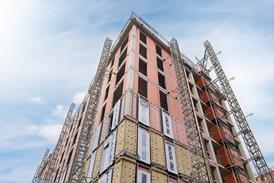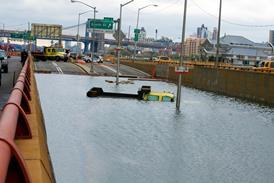Philip White’s ’partial retirment’ announced internally in March but only made public today
The head of the Building Safety Regulator will step down in September, according to the Health and Safety Executive (HSE).
Philip White will “partially retire”, leaving his role as director of building safety but remaining as the chief inspector of buildings, the HSE said.
The decision is understood to have been announced internally in March but has only been made public today.

White has worked at the HSE for 40 years and has led the Building Safety Regulator (BSR) on an interim basis since December 2023. He took over from Peter Barker, who announced his retirement in April of that year just weeks after the body started its approval process for high-rise buildings.
White’s decision to step down comes amid increasing anger in the industry over delays to approvals for the construction of higher-risk buildings, defined as schemes taller than 18m.
The HSE said White had made the “personal decision that it was time for him to reduce his working hours and therefore step down as director of building safety after having led BSR through a pivotal couple of years”.
It added: “Mr White’s decision to only partially retire means that the BSR will continue to benefit from his extensive experience as it enters its second year of operation, and the government has set out how it intends to respond to the Grenfell Inquiry recommendations.”
The BSR has already started a recruitment process for White’s replacement as director of building safety.
Data published by cost consultant Cast yesterday revealed that barely one in 10 applications for new-build schemes have been approved at gateway 2, which is needed for construction to start.
According to figures provided through a Freedom of Information request, just 20 applications out of 187 submitted had been given approval – meaning the percentage of those getting the green light is 10.7%.
Cast’s figures, which cover the period from when the gateway checks came into force in October 2023 to the end of last month, said that on top of the 20 applications approved, a further 18 had been rejected – meaning the status of 149 was unknown.
The figures, supplied by the HSE, also show that 2,049 applications had been made for work to existing high-risk buildings with 393 – the equivalent of 19% – having been approved. A further 191 had been rejected meaning the status of 1,465 was unknown.
And, according to Cast’s own assumptions, the average cost of getting an approved application at gateway 2 level was £27,666, with the highest cost coming in at £83,449.
The figures said the average cost of a rejected gateway 2 application was £12,957 while the highest cost of a rejected gateway 2 application was £26,168.
For existing higher-risk buildings, the average cost of getting an approved application at gateway 2 level was £6,001 while the average cost of a rejected application was £4,763.
Cast said the highest cost of an approved application in this category was £33,792, while the highest cost of a rejected gateway 2 application was £19,627.



























No comments yet